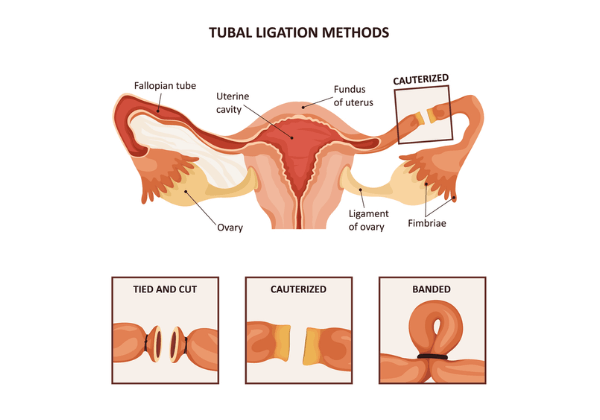Tubal Reversal
Many women decide to have “permanent” sterilization as a birth control method when they feel they no longer want to have children. Often this takes the form of a tubal ligation in the woman or a vas deferens ligation (Vasectomy) in the man. Subsequently, some of these men and women change their minds and want to have the sterilization reversed. Happily, the surgical blockage can be removed in most cases of ligation in both men and women. This “reversal” will usually result in pregnancy as long as no other factor has occurred to prevent conception. In women, this is typically the case and pregnancy can be achieved, depending on the type of ligation originally performed, about 90% of the time.
Reanastomosis, or tubal reversal, is a procedure in which a woman, who has had a prior tubal ligation by rings, clips, or fulguration can “reverse’ the ligation to achieve pregnancy. Pregnancy rates with reanastomosis depend on several factors. The fallopian tubes have got to remain patent, or open. Additionally, the woman’s age and other factors that affect overall fertility are to be considered. More than 75% of women will be able to conceive following a successful reanastomosis.
In this process an incision is made into the abdomen to gain access to the fallopian tubes. The ends of the fallopian tubes are then incised to expose the opening of the tube or lumen. The tubes lumens are reattached under a microscope. As soon as the tubes are reattached, the serosa, or outer covering of the tubes are brought together over the top of the inner portion of the tube. Often, colored dye is used to test the repair and patency of the fallopian tube.
There are many types and methods of performing bilateral tubal ligation. Factors in the potential for anastomosis are determined by the part of the tube that has been destroyed and the amount of tube destroyed. Each method and type of ligation has a different impact on the tube thus it has its own prognosis for reversal.
The success of the procedure depends on several factors: most importantly, the amount of healthy tube remaining, location of the tubal damage, and age. Other factors, like ovulation and sperm counts will need to also be taken into consideration.
- Age – there is a sharp decline in fertility that starts to occur around the age of 36. However, chances of pregnancy remain reasonable until women reach 40.
- Tube length and damage – If any of the tubal interruption procedures are performed without excessive damage to the tube, most all tubal ligations can be reversed. Excessive scar tissue around the site of the procedure can also cause problems with fertility and the potential to adequately repair the tube.
- Ovulation – If a woman is beyond the age of 43, the likelihood of producing good quality eggs is very low.
- Other factors to consider – overall health and obstetrical history are important to consider before going forward with a tubal reversal. Uterine fibroids or a history of previous preterm delivery can impact significantly your ability to successfully carry a pregnancy to term.
At PSFC, our doctors can perform tubal reversal to restore your ability to get pregnant.
3 Benefits of Tubal Reversal
Quick Surgery
Most reversal surgeries can be completed in under three hours. Our doctors use tiny, precise incisions and the least invasive tools to ensure the surgery is as comfortable and low-risk as possible.
Minimal Recovery
Patients can expect to return to their regular activities within a week of their surgery. In most cases, they can try to get pregnant just one month after the procedure has been completed.
High Pregnancy Rates
At our clinic, the success rate of tubal ligation reversal is approximately 90 percent. Approximately 70 percent of patients are able to get pregnant within a year of surgery.


